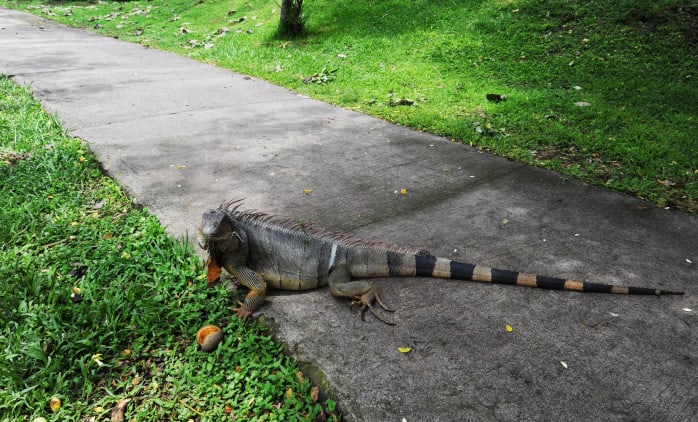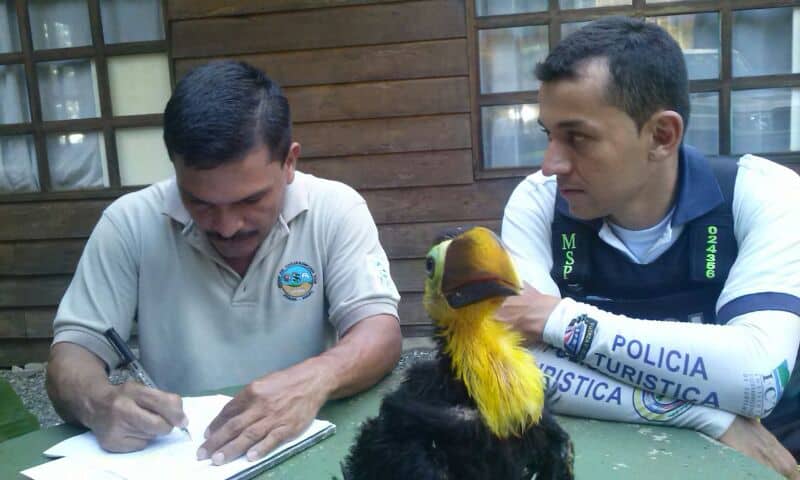Thousands of parrots, monkeys, iguanas, toucans, turtles and other rain forest animals are kept as exotic pets in Costa Rica, a practice putting some species at risk, according to experts.
The Central American country, famous for its rich biodiversity, won plaudits from conservationists two years ago for banning sport hunting in a pioneering move to protect wild animals.
But scientists and activists — gathered this week for the country’s first-ever conference on the issue of captive wildlife — say tropical animals face another major threat in Costa Ricans’ long-time love of exotic pets.
“There are no precise figures, but we know it’s a problem of great magnitude, because a study by the Environment Ministry found that 25 percent of households have a parrot or a parakeet as a pet,” said Andrea Aguilar of the Instituto Asis, a key figure behind the conference.
That would add up to nearly 400,000 exotic birds in cages, she said.
Aguilar’s institute runs a shelter for wild animals in La Fortuna de San Carlos, a lush region in northern Costa Rica that draws large numbers of foreign tourists with its famous wildlife and tropical vegetation.
The shelter takes in wild animals kept as pets that fall sick or are wounded by people, cars or electric shocks.
It gives them veterinary care and, when possible, prepares them for an eventual return to the wild.
“Costa Rican law forbids keeping wild species as pets, but the law isn’t enough because there’s a very deep-rooted custom. People don’t realize that wild animals are not and cannot be pets,” Aguilar told AFP in an interview ahead of the First Congress on Wildlife Rescue, Recovery and Freedom in San José.
She said people have a range of reasons for keeping pets such as white-faced capuchin monkeys, green iguanas or songbirds. They are drawn to the animals’ beauty, they want to entertain their children or they feel it brings them social status.
But the underlying problem is that people are largely ignorant of the animals’ diets, growth, life span, habitat, diseases and behavior.
“A family falls in love with a baby white-faced capuchin because it’s funny and affectionate, but when it reaches 2 years old its behavior will change. It will become aggressive, bite and pull people’s hair. That’s when it becomes a problem at home,” she said.
Such animals often end up being mistreated or killed, or, with luck, in a shelter, she said.
By that point returning them to their native environment is difficult. They lack survival skills and are unlikely to be accepted by other members of their species.

Traffic in exotic animals
The international traffic in exotic animals exacerbates the problem.
The illegal $20-billion-a-year trade has taken a major toll on Costa Rica’s biodiversity, as animals are captured and sold abroad, Aguilar said.
One of the goals of the three-day conference is to prod the Costa Rican government to expand environmental education programs for locals, foreign visitors and ecotourism operators.
“It’s important to make people understand that wild animals have to live in the forest, because they have different needs from domesticated animals,” said Aguilar.
Protecting the environment is also key for the Costa Rican economy, which depends heavily on tourism and attracted 2.4 million visitors last year — many of them drawn by the country’s tropical wildlife and forests.





